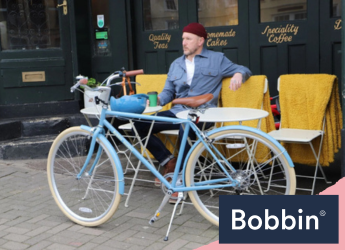Urban Cycling Guide | Mastering City Streets
There’s nothing better than getting around the city on a city bike. But considering the bustling environment, it’s smart to create a plan so you enjoy it to the fullest. In this guide, we’ll break down some helpful tips that can help you master the urban streets. Ready?
Choose Your Ride
Your bicycle must be up to the demands of the city’s buzzing setting. This means it should provide you with comfort and efficiency, as you’re likely to encounter busy intersections, pedestrians, heavy traffic, and so on. If you’re shopping for a bike, consider these features:
- Lightweight but sturdy frame for easy manoeuvrability.
- Well-padded, ergonomic saddle for comfort during long rides.
- Smooth gearing system for ease of handling varying terrain and speeds.
- Rear rack for attaching your pannier bag or bike basket to carry groceries and other items.
- Additional accessories like fenders also come in handy when cycling in the rain. They prevent water, mud, and debris from splashing up onto you, as well as keep dirt off the chain and brakes.
Most city or commuter bikes, like the Birdie Lightweight Bike, come with these features. We recommend considering this bike type, as it is specifically designed for urban riding.
For more compact convenience, consider a folding bike. These can be closed and lifted with one hand, to help you take it on the train on your commutes.
Plan Your Route
Once you’ve found the perfect bike, it’s time to plan your route and familiarise yourself with the city. Use a city map to find where the major streets, bike lanes, and landmarks are. Practise different routes to see how traffic and conditions change in certain areas. Doing so will help you choose directions with less congested streets, avoid construction zones or road hazards, and find quieter streets. With a well-planned route, you can shorten your travel time and make your trip more efficient.
Tips: Wear reflective clothing for visibility, especially when riding at night. Stay hydrated when cycling in hot weather, and be sure to wear the best winter cycling clothes during colder seasons.
Understand Traffic Rules
Urban cycling in the UK and anywhere in the world requires a keen understanding of traffic rules. Follow designated cycle lane rules where available and adhere to general traffic regulations. This includes obeying traffic signals, signs, and road markings.
Always ride on the left side of the road. Signal clearly before any turns and check for oncoming traffic before changing lanes. Be aware of pedestrians and other road users, and stay vigilant at intersections.
Another thing to keep in mind is to respect pedestrian crossings and give way to them. While wearing a bike helmet is not legally required, it’s best to wear one for personal safety. THINK: it’s better to have a helmet and not need it, than to need it and not have it. Also, consider attaching a bike bell to alert pedestrians and fellow cyclists.
Read The Highway Code to learn more about the rules for cyclists.
Round-up
Urban cycling becomes an exciting adventure when you have the right bike, safety gear, and a good sense of direction. We hope these tips and ideas boost your confidence on the road and help you enjoy exploring the best cities for cycling in the UK.
While you’re here, browse our selection of kids bikes and adult bikes to find the perfect ride for every member of your family.
FAQ
How can I get better at cycling in the city?
Practice regularly, familiarise yourself with traffic rules, and plan your routes wisely. Build confidence by starting in less crowded areas before tackling busier streets. Consider taking a cycling proficiency course for additional skills and knowledge.
Is cycling in cities safe?
Yes, with precautions. Use bike lanes when available. Obey traffic rules and prioritise visibility with lights and reflective gear. Choose quieter routes, lock your bike securely, and invest in a good helmet for added safety.










